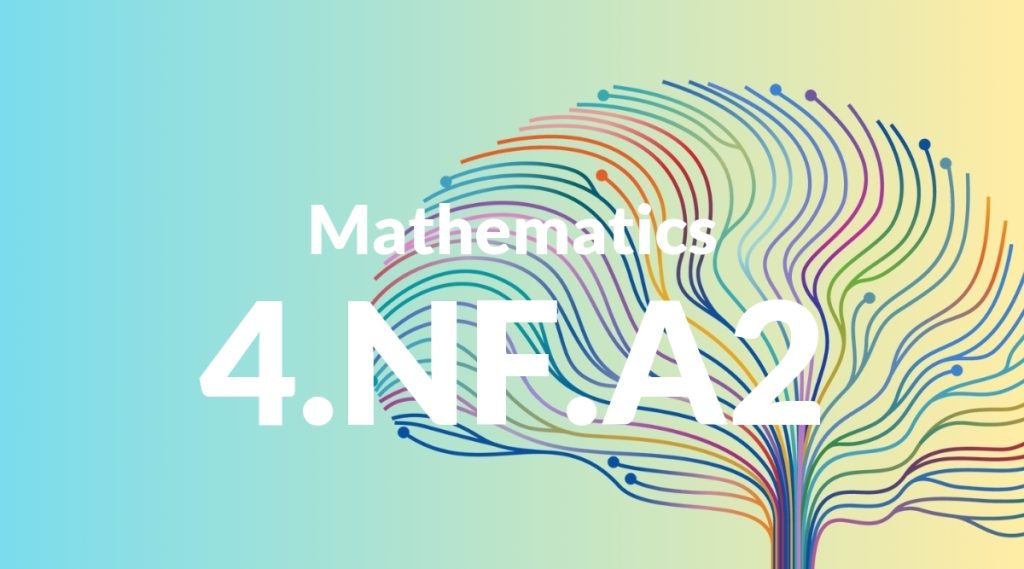Standard: 4.NF.A2 – Compare two fractions with different numerators and different denominators, e.g., by creating common denominators or numerators, or by comparing to a benchmark fraction such as 1/2. Recognize that comparisons are valid only when the two fractions refer to the same whole. Record the results of comparisons with symbols >, =, or <, and justify the conclusions, e.g., by using a visual fraction model.
Grade level: Grade 4
Subject: Mathematics
Domain: Numbers & Operations – Fractions
Teacher Overview
This standard focuses on helping students compare fractions with different numerators and denominators. It is crucial as it lays the foundation for understanding fraction equivalence and operations with fractions, which are essential for higher-level math. Students should be familiar with basic fraction concepts, including identifying and creating equivalent fractions, and understanding numerators and denominators.
After mastering this standard, students will be able to perform operations with fractions and solve real-world problems involving fractions.
Common Misconception 1
Students may think that fractions with larger denominators are always smaller because they see a larger number in the denominator and assume it means a smaller piece.
Intervention 1
Use visual fraction models and real-world examples to show that the size of the denominator does not determine the size of the fraction. For example, compare 1/2 and 1/4 using pizza slices.
Common Misconception 2
Students might believe that fractions with larger numerators are always larger because they see a larger number in the numerator and assume it means a bigger piece.
Intervention 2
Provide examples and visual aids to demonstrate that the relationship between the numerator and denominator determines the fraction’s size. For example, compare 3/4 and 3/8 using fraction bars.
Prerequisite Knowledge
Students should understand the concept of fractions, including the terms numerator and denominator, and be able to identify and create equivalent fractions.
Subsequent Knowledge
Students will develop skills in adding, subtracting, multiplying, and dividing fractions, as well as solving real-world problems involving fractions.
Instructional Activities
- Use fraction strips to compare different fractions.
- Create visual fraction models to compare fractions.
- Solve real-world problems involving comparing fractions.
- Use benchmark fractions like 1/2 to compare other fractions.




